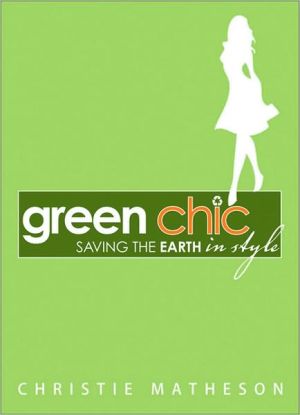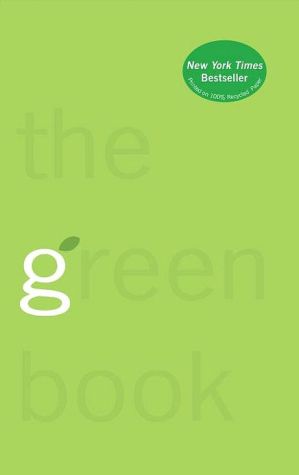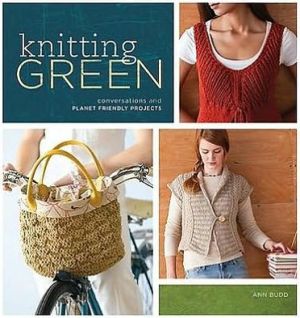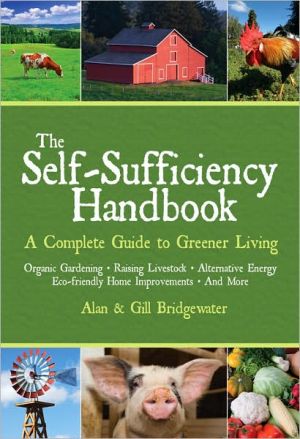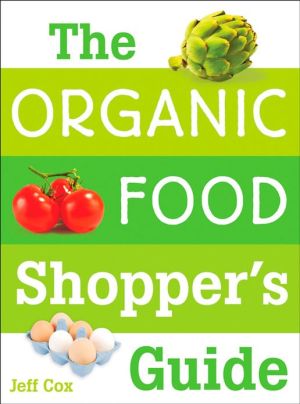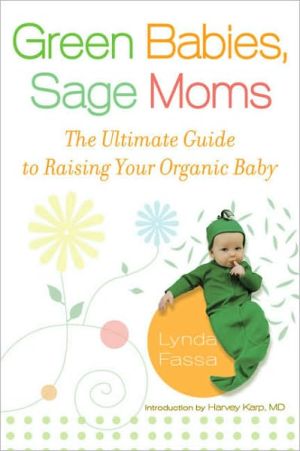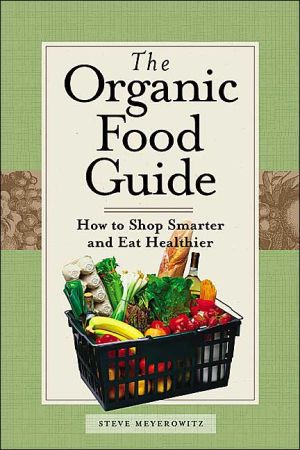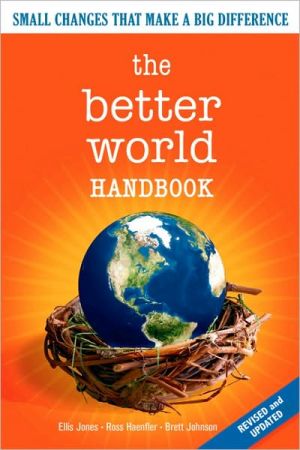Green Chic: Saving the Earth in Style
"Matheson slyly steers us toward consumer goods and services that minimize our earth-stomping human footprint. She's brave enough to say 'buy less of everything,' and even the politically fraught 'buy nothing.' Matheson's genius is to make this seem not only doable, but fun."\ - Elizabeth Royte, author of Garbage Land and Bottlemania\ Want to go green without giving up great style? Welcome to the world of Green Chic. Choosing to be green makes a real difference in the fight against global...
Search in google:
Offering up dozens of author-tested, earth-friendly ideas, writer Christie Matheson reveals that being chic and saving the planet aren't mutually exclusive in Green Chic.
Chapter 1: Green Glossary\ Here are brief definitions for some frequently used environmental terms. I didn't really know what a lot of these meant when I started this project. Gaining an understanding of their meanings can help the concepts of green living make a little more sense. I explain many other terms in context throughout the book; in this section I've attempted to cover the basics to get you started. If you already know these, feel free to skip ahead. They'll be here for you if you need them.\ Alternative energy: Environmentally friendly, sustainable energy not derived from burning fossil fuels-wind and solar energy are two examples.\ Biodegradable: Made primarily of natural components and able to break down and be absorbed into an ecosystem.\ Biodynamic: A rigorous form of organic farming that uses specific field and compost preparations according to an astrological calendar. Biodynamic farms are certified by the organization Demeter.\ Carbon dioxide: (CO2) emissions A common way to quantify an individual's or household's impact on global warming. Burning fossil fuels such as petroleum, coal, and natural gas emits CO2, which is also a naturally occurring greenhouse gas, into the atmosphere. Because of human-related emissions, the level of CO2 has gone from about 280 parts per million (where it was before the industrial era began) to more than 350 parts per million-and increasing quickly-today. The average American is responsible for about 22 tons of CO2 emissions per year. Personal activity (as opposed to industrial activity) accounts for more than 30 percent of all CO2 emissions in the United States.\ Carbon neutral: Describes an entity (or person) that has effectively neutralized the impact of the greenhouse gas emissions caused by its (or her) activities, so there is no net contribution to global warming.\ Climate change: A widespread change in weather patterns or temperature.\ Compost: To let organic waste break down and decompose into a mineral-rich material that can be used as mulch or to enrich soil for gardening.\ Dioxins: Chemical by-products from the manufacturing of synthetic chemicals and the incineration of chemical-containing products. They are powerful carcinogens that also disrupt the endocrine system, damage the immune system, and cause kidney and liver problems and birth defects.\ Energy Star: This Environmental Protection Agency (EPA) program evaluates the energy efficiency of home appliances and electronics. Energy Star—rated products are generally significantly more efficient than their non—Energy Star counterparts.\ Factory farm: A concentrated animal feeding operation (sometimes called a CAFO) with one thousand or more head of livestock.\ Food miles: The number of miles food has traveled from where it was produced to your plate. Food in most U.S. grocery stores has traveled an average of about 1,500 miles.\ Formaldehyde: A chemical used as a preservative in beauty products as well as in paper products and wood furniture. Formaldehyde is emitted from these products as a gas. It's a known carcinogen and an irritant to the eyes, nose, throat, and respiratory tract.\ Fossil fuels: Fuels such as petroleum, natural gas, and coal that come from decomposed fossilized plants and animals.\ Global warming: An increase in the average temperature of the air near the earth's surface and the oceans. It's caused by excessive greenhouse gases, such as carbon dioxide (CO2), being released into the atmosphere and acting as a blanket to hold the heat close to the earth.\ Greenhouse gases: Gases that trap heat in the earth's atmosphere. Carbon dioxide (CO2) is the most prevalent greenhouse gas; methane, nitrous oxide, and fluorinated gases are others.\ Greenwashing: When corporations and products claim to be environmentally friendly-but those claims are suspect.\ Kilowatt-hour (kWh): A unit of energy equal to 1,000 watt-hours. A watt-hour is the energy used for a 1-watt load to draw power for 1 hour. You can calculate kWh by multiplying the wattage of a device (such as a hair dryer or a lightbulb), multiplying it by the hours used per day, and dividing it by 1,000. Using 1 kWh results in the emission of about 1.5 pounds of CO2.\ Organic: When referring to food or food ingredients, organic means something that has been grown without the use of synthetic chemical pesticides or fertilizers. To be labeled organic in the United States, a food needs to meet stringent USDA requirements. Beauty products labeled organic are not subject to the same guidelines. More generally, organic refers to matter that was recently living and is able to decay or decompose.\ Parabens: A group of chemical preservatives used in many beauty products. They mimic the effect of estrogen and may be carcinogens.\ Petroleum: Also known as crude oil, petroleum is a naturally occurring liquid fossil fuel. It is a major energy source and a raw material used to make plastics, fertilizers, and pesticides. It is a nonrenewable resource (in other words, there's a finite supply in the world).\ Phthalates: Industrial chemicals that are frequently added to consumer products, generally to act as plasticizers (i.e., to make plastic flexible) or as solvents to make fragrances last longer. In the personal care realm, they are often found in nail polish, makeup, and hairspray. Phthalates are suspected carcinogens and hormone disruptors that can enter human bodies via inhalation, skin absorption, and ingestion.\ Postconsumer waste: Material that has been used by the consumer and discarded (or recycled).\ Recycling: Processing used materials into new raw materials.\ Volatile organic compounds: (VOCs) VOCs are chemical compounds emitted as gases from some solids and liquids at room temperature (they don't need to be superheated or frozen or anything). Many conventional paints, lacquers, cleaning products, cosmetics, wood preservatives used on household furniture, and dry cleaning chemicals give off VOCs. So do gasoline, motor oil, and kerosene. VOCs can cause headaches; eye, throat, and skin irritation; nausea; and kidney and liver damage. They may also be carcinogenic and harmful to the central nervous system.
Introduction: in which I say hi and explain green chicGreen Glossary:a few helpful terms to know Little Green Things:baby steps to greener living Home, Green Home:being green a su casa, in two parts Dining and Drinking:eco-friendly food, wine, and more Hello, Gorgeous:beauty and personal care Green is the New Black:info for fashionistas Getting Around:everyday transportation, and ten travel tips On Occasions:parties and celebrations and such Big Green Things:a little section about the big picture My Favorite Green Things:these are a few of, well, my favorite green things Source Stuff:some of the things I read in the course of my researchAcknowledgments Index About the Author
\ From the Publisher"I thoroughly enjoyed reading this book. It is very easy reading, its thought provoking and offers fun, realistic and practical tips to make changes and re-think your lifestyle. The book is a neat pocket size and has a nice feel to it, it explains why it is in book form and advises the reader of where the materials have come from to produce it." - Green Girls Global\ "Author Christie Matheson's style of writing is breezy and Carrie-Bradshaw-ish, with funny asides and useful sidebars, decent tips hidden in corny jokes, and boiled-down information for the busy fashionista who wants to do good. While the "green" part of this book is the same old stuff, the presentation makes it worth the price.\ If you want to do your part in saving the earth, but can't bear to part with your earth-toned Choos, pick up "Green Chic". Missing it will leave you positively purple. " -\ "Most of the book offers up fetchingly stated green living alternatives. ("Fetchingly stated" because, I assure you, this writer does not do things without style. Ev-ah. But you guessed that already.) She deals with all aspects of green living in the real world. Long story short: follow Matheson's path, heed her advice and you will decrease your footprint. And, needless to say, you'll look fabulous doing it." -\ "Matheson has clearly done her homework. The book starts with a fun description of chic, evoking Jackie O and Audrey Hepburn, while instantly diving into the seriousness of why we all need to care about and be aware of what is happening to our planet. She lays out a green glossary for reference and then spends the rest of the book teaching us how we can look and be fabulous while making a difference in our planet's health. " - The Budget Ecoist\ "" -\ "These days, however, the idea of going green either conjures up burdensome images of giving up the luxuries you love, or makes you think you need to replace everything you own with green products. This book was written for those of us who are environmentally conflicted." - Second City Style\ "While there is a lot of consumerism going on in this little green book, I'm impressed with the amount of information and environmental facts she packs in here, alongside the tips. She backs it all up with her list of 'favourite green things' at the back of the book, which is a great compendium of useful websites of suppliers and producers.\ Matheson has road-tested most of the products mentioned, and is a quirky, often funny writer, guiding the readers through a mindset-changing labyrinth of greenness. She is ably assisted by her fiance Will, who testifies to the quality and strength of the recycled razors.\ This could be the perfect book for an eco-sceptic in your family or amongst your friends. Buy a dozen copies, and pass them around at random: embrace the fabulousness of green living!" -\ "Welcome to another Monday on the Eco-Libris blog. You know what that means? That's right: Another Monday...another book! And this book is especially FABulous!\ You know how every once in a while you read a book that makes you laugh, cry, learn...an experience filled with so many 'Oh!', and 'Yes!' moments that it reminds you why you LOVE reading so much? A book written by someone you wish was your BBF (forget Paris Hilton, y'all), because they sound so funny, hip, and interesting? Pick up a copy of Green Chic: Saving in Earth in Style, by high-style author and fashion journalist, Christie Matheson, and you too can revel in such pleasure! " - River Wired\ \ \
